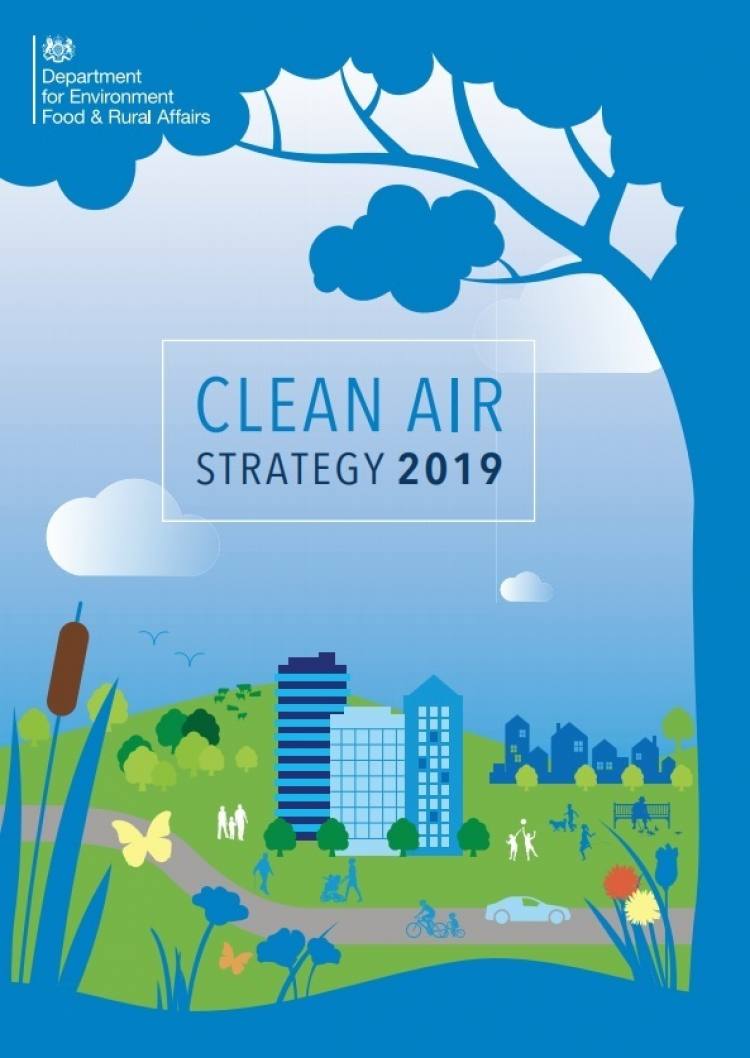Millhouse Wood Blog
Blog Post
The Clean Air Strategy: What does it mean for me?
Posted on Mon 1st Apr, 2019 in: Blog

Since the government announced their new Clean Air Strategy, we’ve had a lot of people asking, “What does it mean for me?”. Well I’ve dived deep into the government website and read up on this new document to tell you all you need to know.
What is the Clean Air Strategy?
The Clean Air Strategy outlines how the government plan to tackle sources of air pollution, making the air healthier to breathe, protecting nature and boosting the economy. It works with 3 other UK government strategies, the Industrial Strategy, the Clean Growth Strategy, and the 25 Year Environment Plan.
Air pollution is a result of the way we generate power, heat homes, produce food, manufacture goods and power transport. In the past, the priority was to tackle the largest individual sources of pollution, however as these have now decreased, the contribution of smaller sources is increasing, and action needs to be taken.
The government’s goal is to reduce the harm to human health from air pollution by half. The UK has set strict guidelines to cut emissions by 2030. They plan to reduce emissions in 4 areas: Transport, at Home, Farming, and Industry. The one we’ll be focusing on is reducing emissions at Home.
What does this have to do with wood burners?
They’re very popular in the world of interior design, but wood burning stoves and open fires aren’t as environmentally friendly as you might think. New restrictions are going to be brought in over the next few years, to reduce the pollution caused by wood burners and open fires across the country. Burning wood and coal makes up to 38% of the UK’s Primary Emissions of Fine Particulate Matter (tiny particles of pollution in the air).
However, not all forms of domestic burning are equally as polluting- it all depends on the appliance you have, how well it is used and maintained, and what fuel is burnt on it. Using cleaner fuels, a clean working appliance installed by a competent person, knowing how to operate it efficiently and ensuring your chimney is regularly swept will all make a big difference to how much pollution is produced.
What does the Government plan to do?
To try and tackle this source of pollution, the government plan to make laws to prohibit the sale of the most polluting fuels, and the most polluting log burners will be banned from sale in the next few years. The sale of wet wood for domestic use is to be restricted, the sale of traditional house coal may be reduced over time, and sulphur and smoke emission limits will be applied to all solid fuels.
Currently, Councils have designated Smoke Control Areas, which are specific areas where it is illegal to allow smoke emissions from the chimney of the building. The government plan to make changes to these to make it easier to enforce, along with giving new powers to local authorities to be able to act in areas of high pollution. They also plan to work with the industry to identify an appropriate test standard for new solid fuels entering the market. A communication campaign will be targeted at domesticated burners in a hope to improve awareness of environmental and public health impacts of burning.
By 2022, new EU eco-design regulations will come into force. This will ensure all new stoves will need to meet agreed emissions standards before being sold, regardless of where in the country they are going to be used.
What can I do to help?
If you don’t own a wood burner yet and are considering one, don’t think you shouldn’t get one because you’ll be helping to pollute the planet, there are many things you can do to help. When you’re stove shopping, be sure to buy one that has an ‘eco-design’ sticker on it. This shows that the stove has been approved under Green Standards Certification and will burn far cleaner than non-approved stoves. Also, this might go without saying, please refrain from buying stoves online from an unknown seller! These could be coming from anywhere, and most likely will not be approved and won’t burn as clean as others.
If you do already own a wood burner, one of the best things you can do is make sure you are burning the correct fuel type. Wet Wood is classed as anything with more than 25% water, and when fresh can hold up to 80%. When this is burning, it creates a lot of smoke and releases pollutants. Seasoned logs have been stacked outside for several months/years until it is less than 25% and burnable- this is slightly better, but there are still smoke and pollutants being released whilst it is burning. When you burn the logs, if they bubble and spit from the cut ends, it’s still wet.
The best thing to burn is Kiln Dried. Kiln Dried Logs are dried for hours in a kiln, and are guaranteed to be under 20% moisture, meaning they are ready to burn and won’t smoke water out of the log instead of burning. If you prefer burning coal, the best to burn is smokeless. Another clean option are briquettes- they are compressed sawdust and clean wood, which produce a very clean burn and very little ash.
Here at Millhouse, we only sell Kiln Dried Firewood, Smokeless Coal and Briquettes. Everything we sell is ready to burn and doesn’t require any drying or seasoning. This gives you the peace of mind that you are burning the correct fuel for your appliance and assuring you that you are being as environmentally friendly as you can. The watchword at Millhouse is Renewable, and all the products we supply are carefully sourced and chosen to ensure the best quality and value for money.


